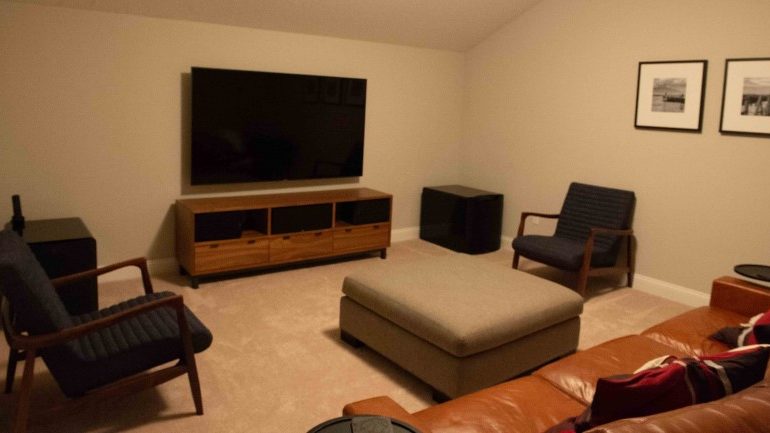Dealing with Boundary Reinforcement in your Home Theater
When placing speakers, and especially subwoofers, boundary reinforcement is often a consideration. Boundary reinforcement happens when you place a speaker near a wall. The effect is that it sometimes changes the performance of the speaker. These changes can be deemed beneficial or detrimental. But first, what is boundary reinforcement and how do you deal with it in your home theater?
Boundary Reinforcement
As we’ve discussed before, sound radiates out from your speaker in waves. At higher frequencies, those waves are very directional. That means that there is more sound energy radiating forward than to the sides or back of the speaker. As the sound frequencies get lower, those waves start to wrap around the speaker. At the lowest frequencies, the sound is essentially omnidirectional. It wraps all the way around the speaker.
When you place a speaker near a wall, lower frequency sounds may hit those walls and bounce back. When they do, they can interfere with the sound coming from the speaker making those frequencies louder or softer depending on how the waves interact. Regardless, if you bought a speaker because you liked how it sounded, boundary reinforcement is changing that sound. That is why it is so important to do at-home auditions of speakers.
Dealing with Boundary Reinforcement

Some speakers (especially center and surround types) will come with switches that will modify the performance of the speaker based on its placement. Center channels are often shoved in furniture and surround speakers are either placed on a wall or wall-mounted. These switches will modify the bass or treble response of the speaker. But what if you don’t have that option?
Before you place any speaker, look up how the manufacturer recommends you place them. Most will have information on how much space between it and a wall you need to have. If you can’t find that information, reach out to them. You won’t have been the first person to ask. Many smaller speakers are designed with wall-mounting in mind. They may actually suggest placement near a wall!
Next, take a look at your speaker. Does it have a port on the back? If it does, putting the speaker close to a wall will affect its bass response. If you must put it close to a wall, consider placing some sort of absorptive material on the wall directly behind the speaker. This will reduce any reflections around your home theater and somewhat counteract the effects of boundary reinforcement. Also, consider placing absorptive material all around your home theater. The rule of thumb is 30% of your surfaces should be covered in absorptive material. If your floor is carpeted, that counts. The rest you’ll have to put up yourself.
Lastly, run your room correction program in your AV receiver. These programs are designed to modify your speaker response to account for room interactions. While they are not a panacea, they can help.
Subwoofers and Boundary Reinforcement
For a while, the recommended subwoofer placement was in the corner. For subs, you can get up to a 6dB boost in volume just by placing the sub in the corner. Boundary reinforcement is, of course, why that boost happens. We now know more about how to place subwoofers in your home theater, but corner placement is still an option. The volume increases are not uniform across all frequencies, but the inconsistencies should be addressed by your room correction program. For the best results, you’ll need two subs in opposing corners.
Conclusion
Boundary reinforcement is something you should think about when placing your speakers in your home theater but isn’t something that should worry you. The easiest way to deal with boundary reinforcement is to place absorptive panels on the walls of your home theater. This will reduce reflections while simultaneously allowing your room correction program to work more effectively.


